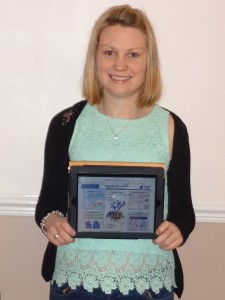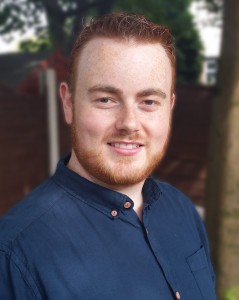Following last month’s Analytical Science Twitter Poster Conference we are delighted to introduce the poster prize winners in this blog post. The event was a great success, featuring work from across the analytical sciences, submitted from all over the world. Around 80 posters were presented during the conference, as well as a couple of videos. Around 380 people took part, asking questions and sharing ideas, with Tweets from Europe, USA, Canada, South America, Africa, Asia and Australia. The science was excellent, subjects presented included diagnosing diseases using nanotechnology, detecting 3rd hand smoke with HPLC, analysing latent fingerprints and microbial metabolomics among many others.
We’d like to say a huge thank you to everyone who took part in the event, in particular the Chair and Scientific Committee for dedicating their time and efforts and making the event such a success!
Chair and Organisers, Matt Baker, University of Strathclyde, UK @ChemistryBaker, Royal Society of Chemistry Analyst @analystrsc, Analytical Methods @MethodsRSC and JAAS @JAASNews. Scientific Committee, Carsten Engelhard, Universität Siegen @EngelhrC, Craig Banks, Manchester Metropolitan University @Act_mmu, Damien Arrigan, Curtin University @arri_aus, Jean-Francois Masson, University of Montreal @Masson_chem, Karen Faulds, University of Strathclyde @FauldsKaren, Martin Resano, University of Zaragoza @MartinResano, Nick Stone, University of Exeter @profnickstone, Perdita Barran, The University of Manchester @PerditaB, Raychelle Burks, Doane College @DrRubidium, Renee JiJi, University of Missouri @ReneeJiJi, Richard Dluhy, University of Georgia @radluhy, Roy Goodacre, The University of Manchester @RoyGoodacre
Many congratulations to the four prize winners of the Analytical Science Twitter Poster Conference!
WINNER
Poster: Cholera and Sugars
My PhD research has focussed on the neutralisation and detection of bacteria and toxins. I am particularly interested in the development of rapid, label-free and inexpensive diagnostics, especially methods for low resource settings, such as in less-developed countries. We use carbohydrate functionalised gold nanoparticles as a colourimetric test for detecting bacteria and toxins and have optimised the particle design so that the method gives rapid readouts in biologically relevant (saline) conditions. We have also shown that this method is compatible with a simple mobile phone camera set up, removing the need for a spectrometer, making the system preferable for use in low resource and low expertise environments.
In the future, I aspire to develop these diagnostic methods into kit-type formats in order to facilitate their use by untrained operators. I am also interested in developing a paper based lateral flow assay for toxin detection, which will further improve the viability of the system in low resource environments by significantly reducing the cost. Having just finished by PhD studies, I am in the process of exploring my options for carrying out post-doctoral research, with a future view to starting my own research group.
RUNNER UP
Poster: Heavy metal detection in aqueous environments using a novel diamond-based electrochemical sensor
I am really pleased to be selected as a runner up for the #rscanalyticalposter competition, which has been a great opportunity for me to get my research out to a wider audience. Work involves the development of novel diamond-based electrochemical sensors, capitalising on the material and electrochemical properties of freestanding boron doped diamond (BDD) films, including chemical and mechanical inertness, large solvent window, low background currents and the ability to be processed into any geometry electrode. Focus is currently on the development of Electrochemical-X-ray Fluorescence (EC-XRF), with an aim of ultimately detecting trace heavy metals in-situ, at a lake or riverside. Here the BDD functions as both an electrode, to preconcentrate metals from solution onto the electrode surface and X-ray window, to enable unambigious chemical identification of the metals on the surface and quantification by XRF. My research goals are to develop diamond-based sensors for use in real-world applications, whilst my career plans are to stay within analytical chemistry where I would love to be involved in the R&D of new analytical techniques.
I would like to take the opportunity to thank my supervisor Professor Julie Macpherson and Diamond colleagues in the Warwick Electrochemistry and Interfaces group, as well as Element Six for the growth of the BDD X-ray window electrodes used in this project. Thank also go to EPSRC and Element Six for funding my PhD project (EPSRC Case award EP/L505110/1).
RUNNER UP
Poster: Illuminating the Future of Cancer Diagnosis via Serum ATR-FTIR Spectroscopy
James is a Chemistry PhD candidate who is developing rapid spectroscopic methodologies for cancer diagnosis in collaboration with clinical partners at Royal Preston NHS Foundation Trust and The Walton Centre NHS Foundation Trust supported by Brain Tumour North West and the Sydney Driscoll Neuroscience Foundation. His research work has established a robust and highly reproducible diagnostic method for the diagnosis of brain cancer with high sensitivities and specificities using patient sera and ATR-FTIR. James recently developed a stratified diagnostic approach which allows for rapid diagnosis of cancer vs. non-cancer, metastatic cancer vs. organ confined, brain cancer severity and the organ of origin for metastatic disease. This work has resulted in 4 publications and 2 journal front covers. In addition to the 2014 Federation of Analytical Chemistry and Spectroscopy Societies Student Award, he has also been awarded Best Clinical Poster at the British Neuro-oncology Society Annual Meeting 2013 and awarded 2 prizes at the National Health Service (NHS) Research & Innovation Showcase 2013/14 at Royal Preston Hospital, UK. James’ future goals include continuing research in the USA as a postdoctoral researcher in the field of biomedical spectroscopy.
RUNNER UP
Poster: Tunable Resistive Pulse Sensing for Bioassays
During my undergraduate degree in neuroscience I was fascinated by the discovery and measurement of biomarkers, especially in relation to making peripheral measurements to analyse the nervous system as, at current, it is very difficult to diagnose disorders of the brain and invasive measurements carry high risk. This led me to take up a PhD researching the development of new technologies and methodologies to be used in bioassays. To do this I anchor a capture probe, termed “aptamers”, to micro and nanoscale beads. Aptamers are sequences of DNA which can bind specific targets in solution, by attaching these to the surface of beads it is possible to have each bead capture the target protein in solution. We then follow and measure this interaction using a nanopore technology allowing us to identify and quantify proteins in solution. The system we use is rapid and is highly portable so it is hoped that one day this could lead towards point-of-care testing in the field.
Following on from this I’d really like a career which involves both scientific measurements and interaction with the public. I also thoroughly enjoy writing and want to improve scientific representation so hopefully in the future I will be able to incorporate this into my future work. For now, however, I’m fairly happy to see where the world takes me with no fixed agenda and enjoy the journey.














